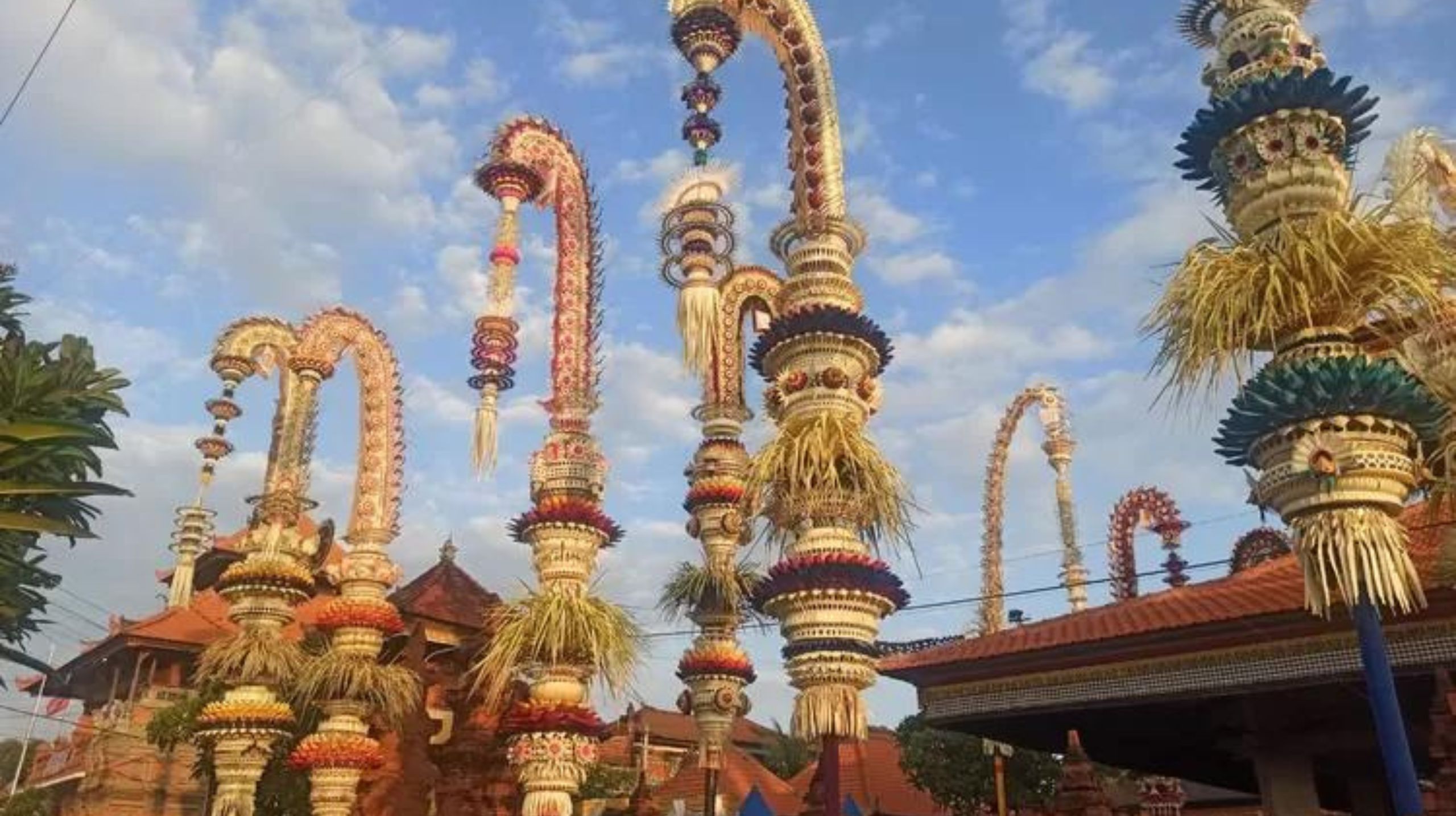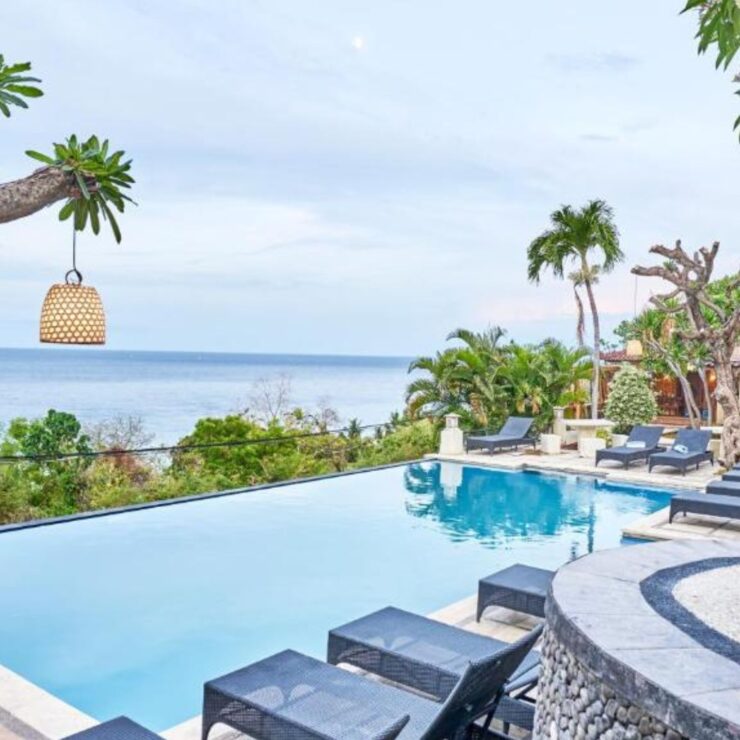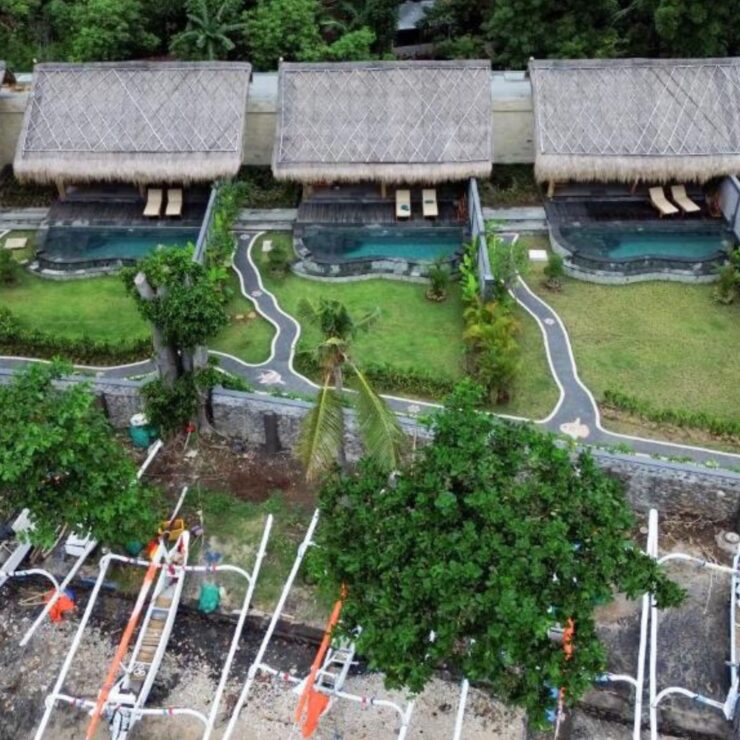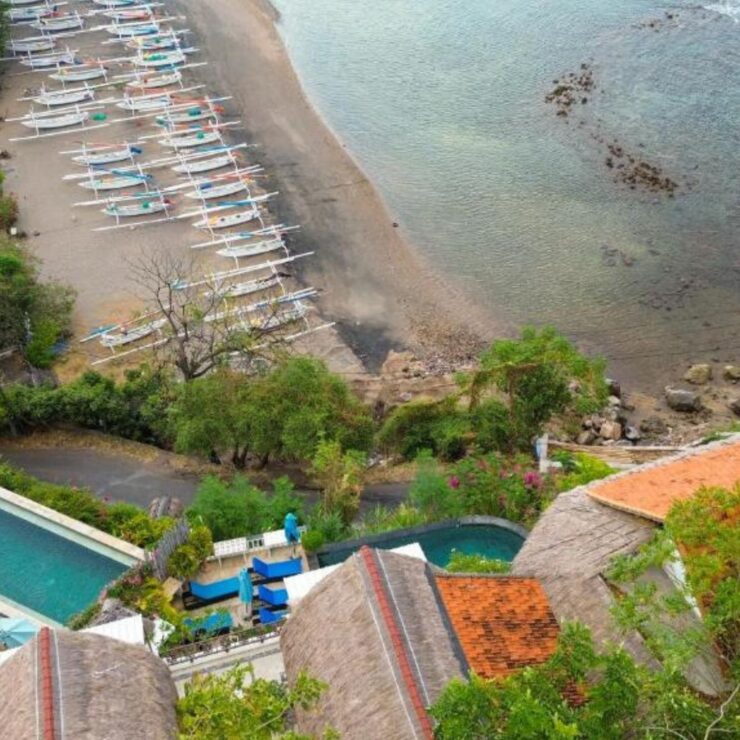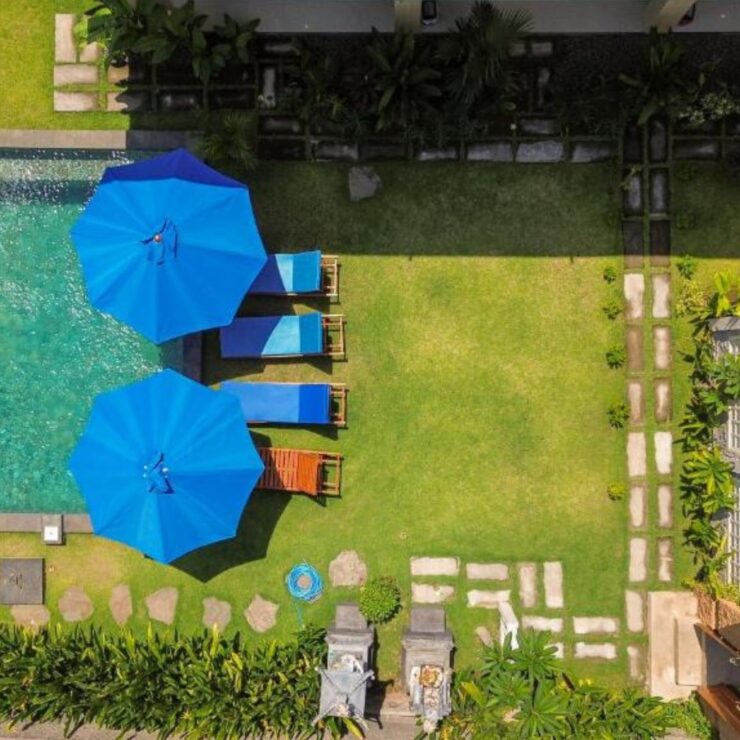Hidden Bali Festivals – Bali is known as an island steeped in culture and tradition, with numerous celebrations and festivals taking place throughout the year. However, behind the excitement of major festivals like Nyepi and Galungan, there are many local festivals that are lesser known to tourists but just as interesting. These festivals offer a more intimate and authentic view of Balinese life and culture. This article will review some of the lesser-known local festivals, including details on the timing and activities involved.
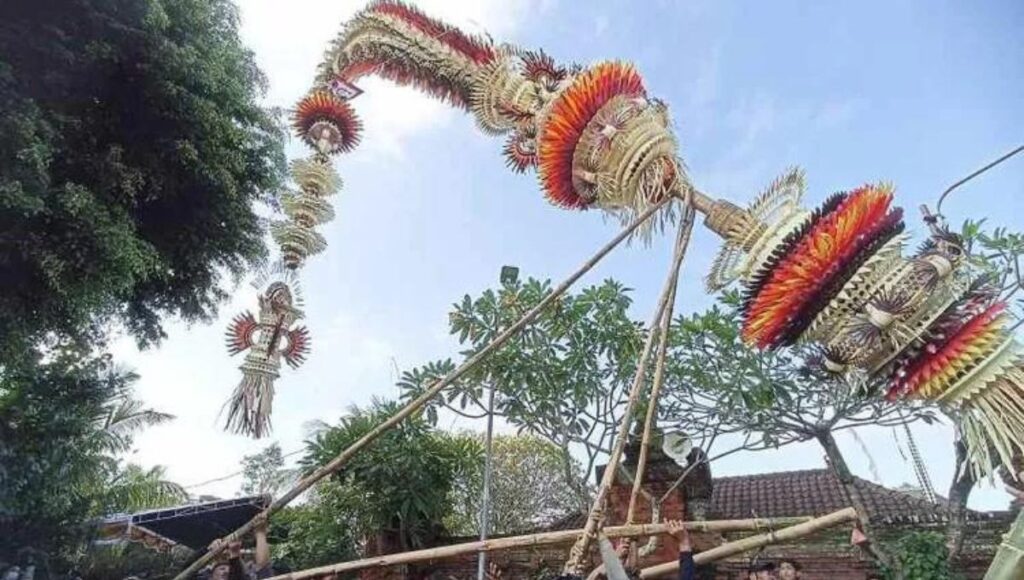
1. Ngerebong
Ngerebong (source pict: Radarbali) is a ceremony held in Kesiman Village, Denpasar, once every 210 days, on Sunday Kliwon in the Balinese calendar. The festival aims to maintain the balance between humans and nature and to ask for protection from evil spirits.
One of the most interesting events in Ngerebong is the trance experienced by some of the ceremony participants. They will thrust the kris into their own bodies unharmed as proof of spiritual power. The ceremony is also accompanied by Balinese gamelan and Barong dances that add to the mystical and sacred atmosphere.
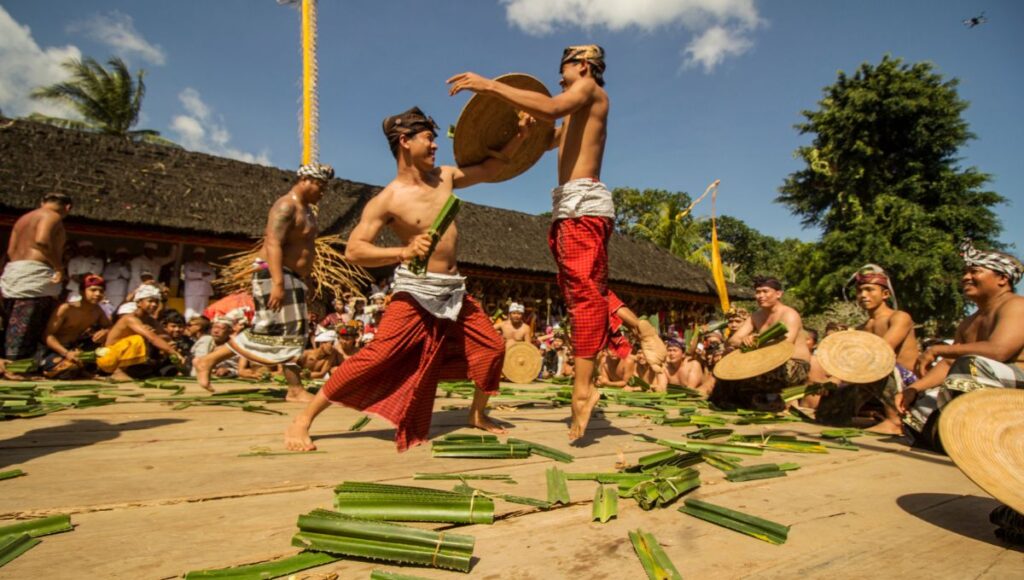
2. Pandan War
Pandan War (source pict: Wikipedia), or Mekare-kare, is a unique festival held in Tenganan Village, Karangasem. The festival usually takes place in June and is part of the village’s traditional ceremony called Usaba Sambah.
During the Pandan War, the men of the village participate in a symbolic duel using prickly pandanus as weapons. They wear traditional sarongs and go shirtless, and fight vigorously while being accompanied by gamelan music. Despite its violent appearance, the festival honors the god of war and the founder of the village, and strengthens social bonds among the village’s young men.
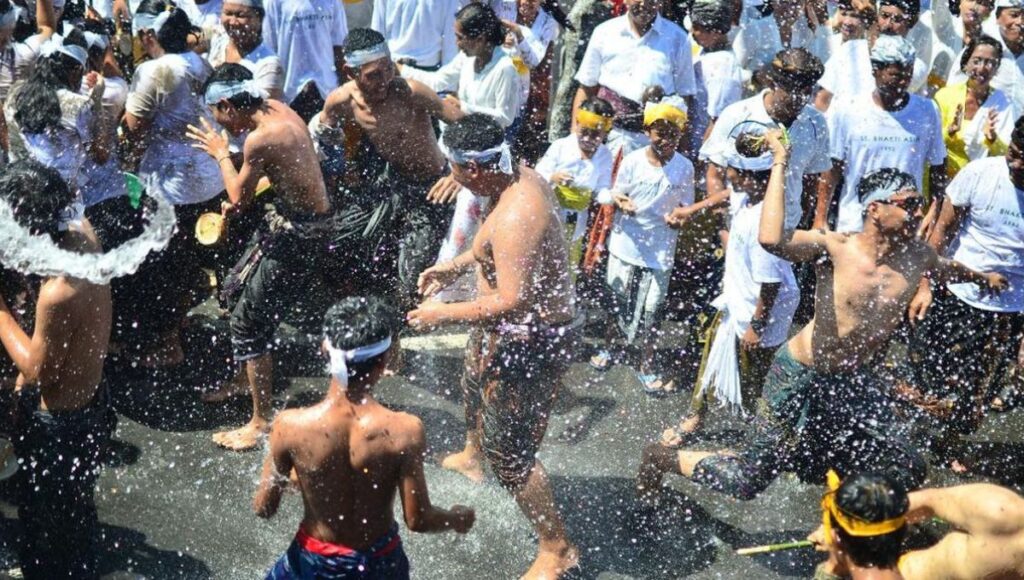
3. Siat Yeh
Siat Yeh (source pict: Detikcom), meaning “water war,” is a festival held in Sesetan Village, Denpasar, every holy day of Ngembak Geni, the day after Nyepi. The festival aims to cleanse oneself of negative energy and celebrate togetherness among villagers.
During Siat Yeh, participants will splash water on each other using buckets or dippers. The atmosphere becomes very lively with laughter and cheering, creating an atmosphere of joy and togetherness. The festival is also accompanied by traditional Balinese music and dance, adding to the festivities.
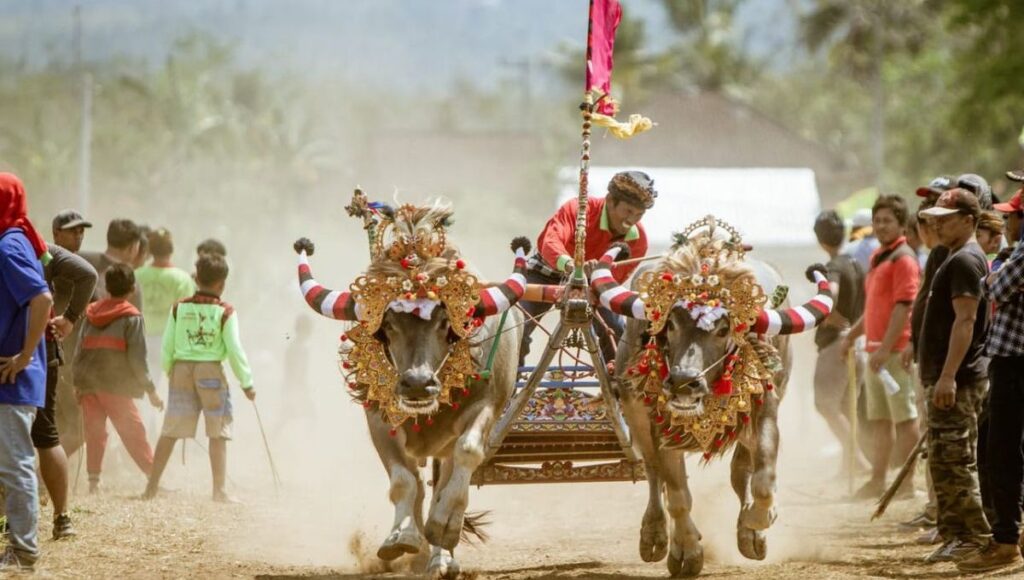
4. Makepung
Makepung (source pict: Detikcom) is a buffalo racing festival held in Jembrana Regency, West Bali. The festival takes place twice a year, usually in July and November. Makepung comes from the old tradition of local farmers racing their buffaloes after the harvest season.
During Makepung, the buffaloes are decorated with colorful ornaments and tied to traditional carts. Jockeys dressed in traditional clothing then race along a predetermined course. The festival is not only a competition, but also a symbol of hard work and cooperation in agriculture.
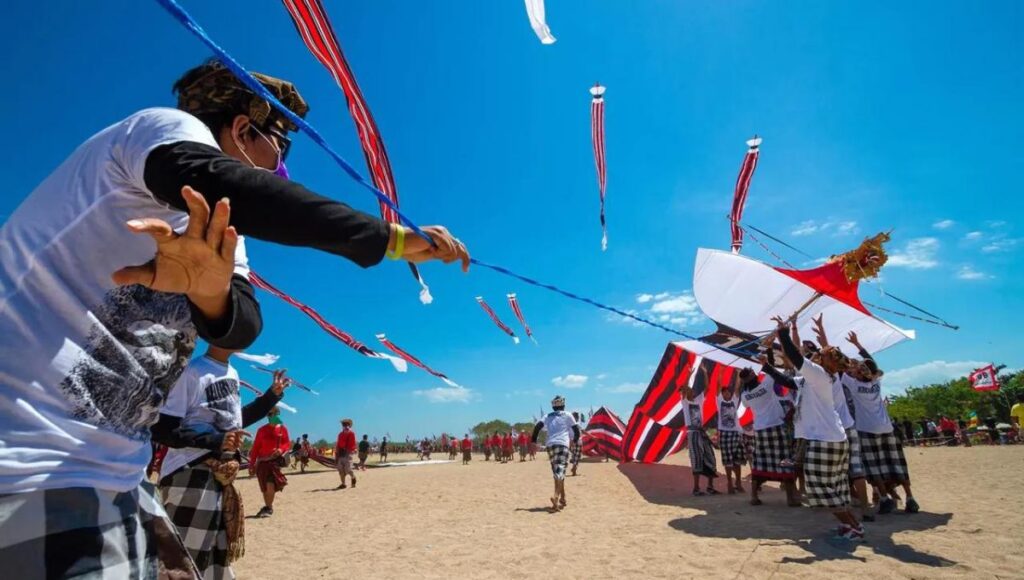
5. Bali Kite Festival
The Bali Kite Festival (source pict: NataDesa) takes place at Sanur Beach and is organized by the Bali Kite Arts Community. This annual event aims to showcase and enhance the artistic skills and creativity of Bali’s youth in kite-making. It features a vibrant display of colorful kites in various shapes and sizes that brighten up the sky over Sanur Beach.
In addition to the artistic exhibition, the festival hosts a kite competition for the Governor’s Cup, attracting numerous participants vying for the prestigious award. Thousands of kites will fill the sky, creating a breathtaking spectacle and celebrating Bali’s rich cultural heritage and craftsmanship. The festival also provides an opportunity for local vendors to showcase traditional Balinese snacks and crafts, adding to the festive atmosphere.
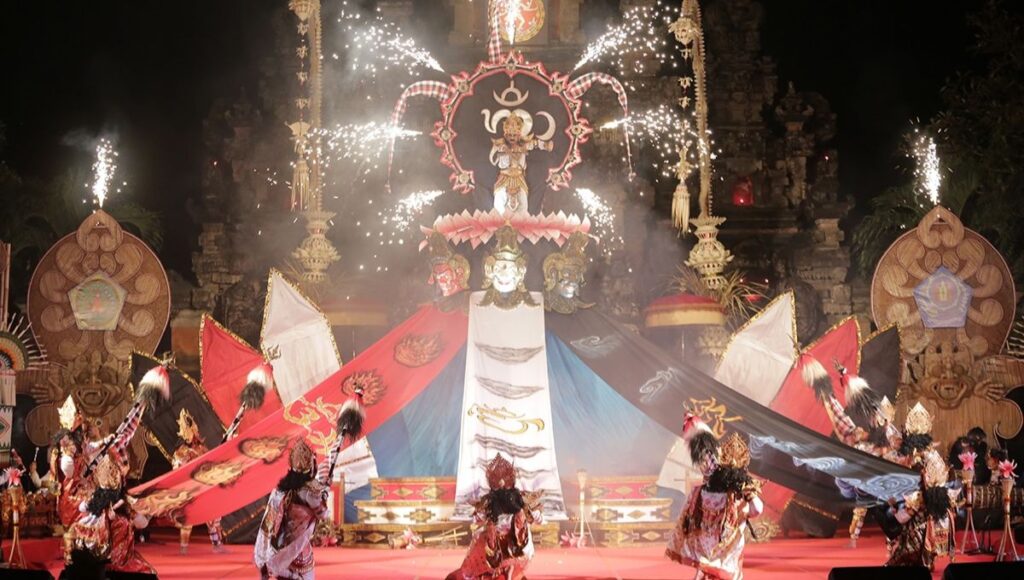
6. Pesta Kesenian Bali
Pesta Kesenian Bali (PKB) (source pict: IndonesiaTravel) is a vibrant festival organized by the Bali Provincial Government to celebrate and showcase the island’s rich artistic heritage. This annual event serves as a platform for Balinese artists to express their creativity and present their work to a broader audience. The festival is a testament to Bali’s commitment to preserving and promoting its unique cultural traditions.
The PKB is designed to support the government’s efforts in exploring, conserving, and developing the values inherent in Balinese art. It features a diverse range of performances, exhibitions, and workshops that highlight traditional and contemporary art forms. By fostering artistic expression and cultural appreciation, the festival plays a crucial role in sustaining Bali’s rich artistic legacy.
Conclusion: Hidden Bali Festivals
Local celebrations and festivals in Bali that are lesser known by tourists offer an authentic and in-depth experience of the island’s culture and traditions. Visiting these festivals provides an opportunity to see a side of Bali that is rarely touched by tourists. From Ngusaba Bukakak to Makepung, each festival is unique and worth exploring. So, if you’re looking for an experience that goes beyond beaches and resorts, try to visit one of these local festivals and experience the true magic of Balinese culture for yourself.
To fully immerse yourself in the beauty and traditions of Bali, consider staying at The Abasan Penida, Uma Dawa Resort and Spa Ubud, Anda Amed, or Alu Lofts Umalas. Each of these accommodations offers a unique and comfortable base from which to explore the rich cultural heritage of Bali.
Read more article about Nusa Penida Bali Indonesia:

